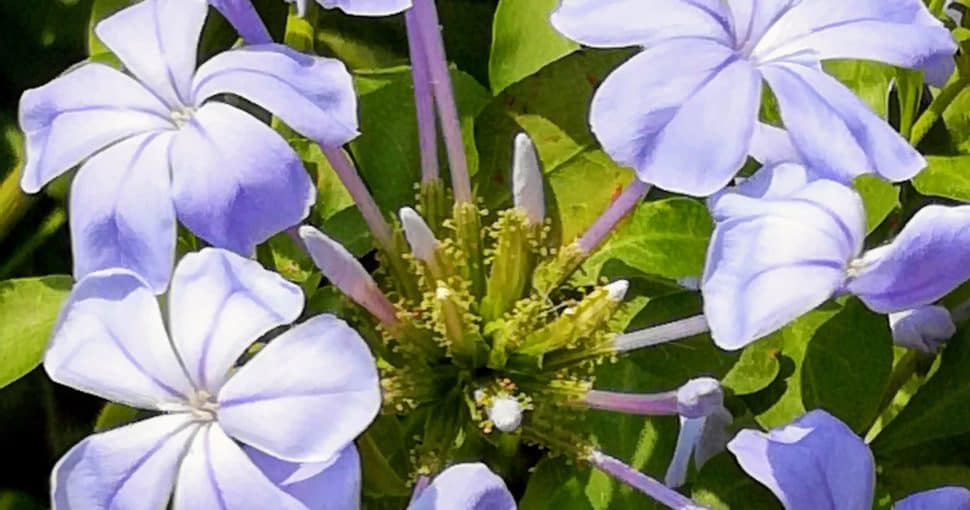Plants that may appear to look lush and green in the Hawaiian flora could actually be toxic and poisonous. Even if they appear unusual, they have the ability to entice you and they may be dangerous even if you only touch them once. Like weeds, dangerous plants can take root on premises that are not adequately maintained. Due to this, the safety of guests, employees, and bystanders on your premises is compromised.
Contents
- 1. Frangipani (Plumeria)
- 2. Oleander (Nerium Oleander)
- 3. Angel’s Trumpet (Brugmansia)
- 4. Pencil Cactus (Euphorbia Tirucalli)
- 5. Crown Flower/Giant Calotrope (Calotropis Gigantea)
- 6. Castor Bean (Ricinus Communis)
- 7. Poinsettia (Euphorbia Pulcherrima)
- 8. Rosary Pea (Abrus Precatorius)
- 9. Apple of Sodom/Thorny Popolo (Popolo Kikania)
- 10. Coral Plant (jatropha Multifida)
- 11. Jimsonweed/Devil’s Weed (Datura Stramonium)
- 12. Physic Nut (Jatropha Curcas)
- 13. Pineapple (Ananas Comosus)
- 14. Laceleaf (Anthurium)
- 15. Pua Kala (Argemone Glauca)
- 16. Florida Hopbush (Dodonaea Viscosa)
- 17. Madam Fate (Hippobroma Longiflora)
- 18. Woodrose/Elephant Creeper (Merremia Tuberosa)
- 19. Swiss Cheese Plant (Monstera Deliciosa)
- 20. Water Lettuce (Pistia Stratiotes)
- 21. Pink Wood Sorrel (Oxalis Articulata)
- 22. Plumbago/Cape Leadwort (Plumbago Auriculata)
- 23. Emperor’s Candlesticks (Senna Alata)
- 24. American Black Nightshade (Solanum Americanum)
- 25. Star of Bethlehem (Ornithogalum Umbellatum)\
Therefore, you need to be aware of common toxic plants to avoid them and get them removed if required by a landscape specialist. Many plants in Hawaii are toxic, so be careful while venturing outside. It’s a common misconception that you can only find toxic plants in the wild. You may find the brightly colored fruits and leaves of deadly plants right in your garden in Hawaii. You and your loved ones should beware of this deceiving beauty!
Elephant Creeper, Swiss Cheese Plant, Water Lettuce, Pink Wood Sorrel, and other deadly plants can be found across Hawaii, depending on the location. You can protect yourself, your pets, and your children if you are well-informed about these plants. If you’re visiting Hawaii and perhaps one of the fantastic botanical gardens, be aware of the following list of twenty-five poisonous plants.
1. Frangipani (Plumeria)
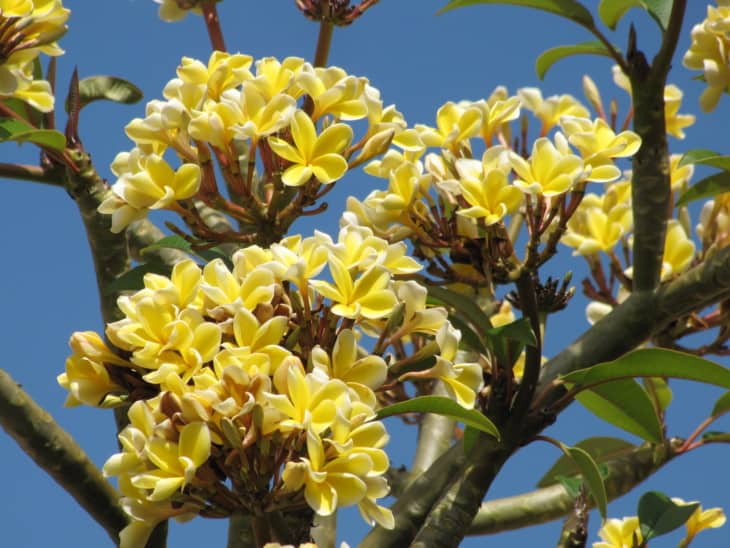
In Apocynaceae’s Rauvolfioideae subfamily, there is a flowering plant genus known as Plumeria, or frangipani. Trim trees and shrubs make up the majority of the species. Plumeria plants, commonly cultivated as beautiful shrubs or small trees in gardens, require soil that drains well and is somewhat acidic to thrive. Frangipanis, which are common and somewhat toxic, can irritate the digestive tract if ingested. The sap’s irritant properties can cause rashes in some animals when it comes into contact with their lips or through breaking a branch or leaf.
2. Oleander (Nerium Oleander)
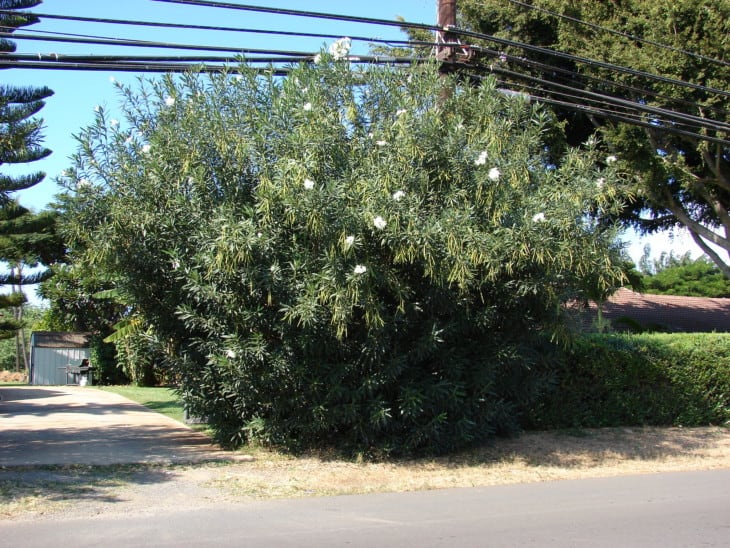
Oleander is an exceedingly dangerous plant found in the wild. Consumption of dry oleander leaves can be deadly if they comprise 0.005% of the body weight of an animal. According to recent investigations, nearly three leaves of oleander can be dangerous for crossbred heifers and horses. Researchers analyzed that the average dangerous dosage of the leaves of this plant is around 26 mg per kilogram of its body weight.
3. Angel’s Trumpet (Brugmansia)
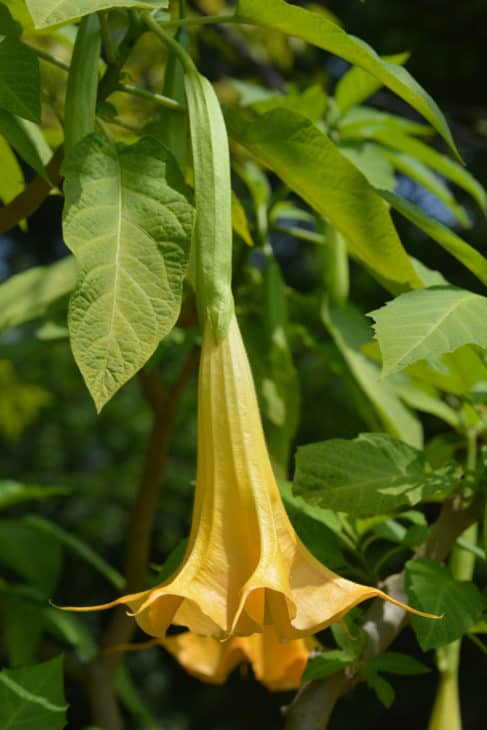
Angel’s Trumpet is part of the nightshade family of shrubs and small trees. This plant is evergreen, with an average height of about 26 feet. The leaves on this plant are toothed, arranged alternatively along the stems of the plant. It also has flowers that are shaped like trumpets, with various colors, including pink, red, orange, white, greenish, yellow, or cream.
4. Pencil Cactus (Euphorbia Tirucalli)
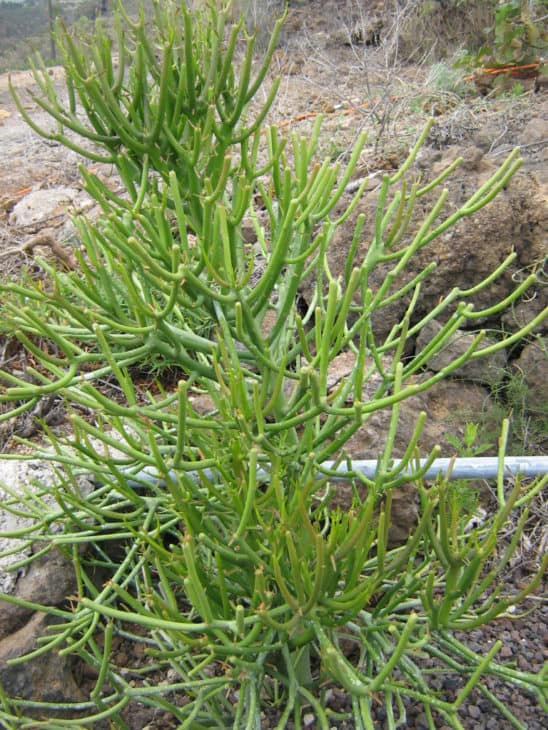
Nicknamed Sticks on Fire, Pencil Cactus is an Indian and South African native euphorbia. It has a milky white latex sap that is strongly irritating. If it gets in the eye, it can cause blindness, and ingesting it can be fatal. This drought-tolerant plant features several slender stems that resemble long sticks or pencils. These stems grow from the base, and in cooler weather, they turn breathtakingly yellow, orange, and pink under bright light.
5. Crown Flower/Giant Calotrope (Calotropis Gigantea)
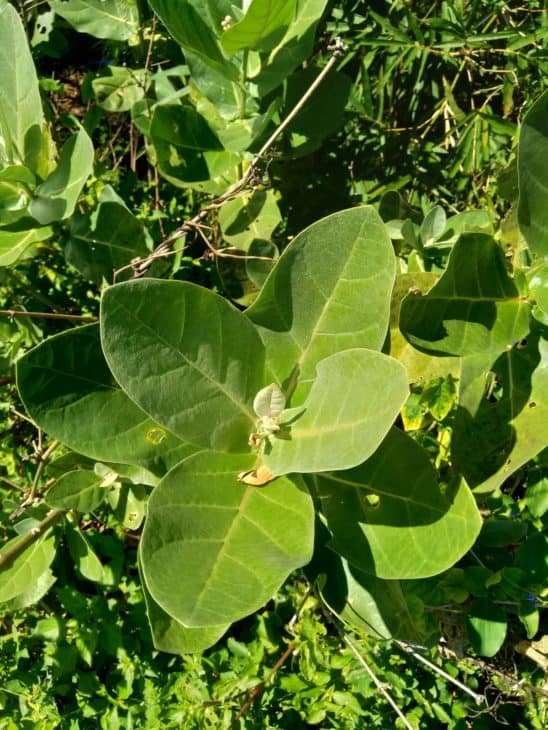
Many people use this plant as a pollinator for their garden or make a lei out of it. Even if it appears to be innocuous, the sticky white sap may be an absolute agony if it gets on your skin or eyes. Your skin will be irritated and burned by the milky juice, and your eyelids will become red and puffy. Ingestion can induce stomach cramps, vomiting, nausea, an irregular and sluggish heartbeat, dizziness, disorientation, and headaches.
6. Castor Bean (Ricinus Communis)
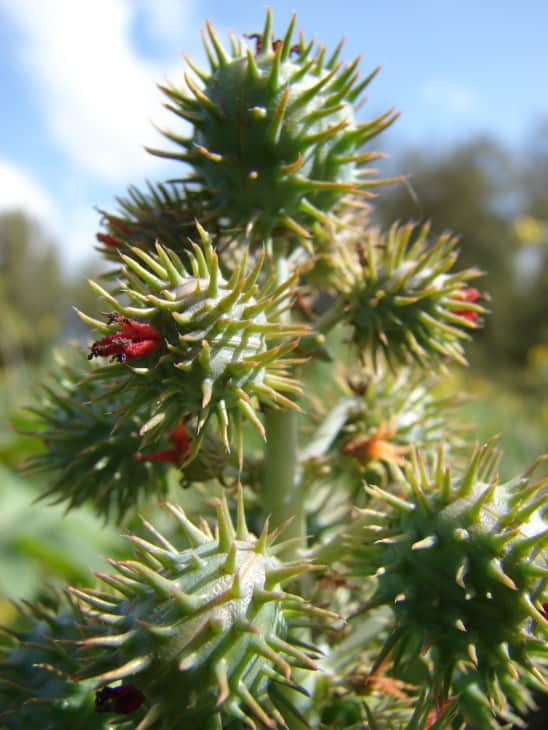
Also known as the African Wonder Tree, Castor Bean is an annual herbaceous, cultivated, ornamental tree native to Africa. It contains highly poisonous leaves and seeds that cause immediate nausea, abdominal pain, bloody diarrhea, vomiting, depression, colic, sweating, difficulty breathing, fever, convulsions, coma, and fatality. Skin contact can cause a severe allergic reaction in certain people. This plant has red-purplish stems, green, alternate, simple, large, compound leaves, and small, white, gold, or red/burgundy blossoms.
7. Poinsettia (Euphorbia Pulcherrima)
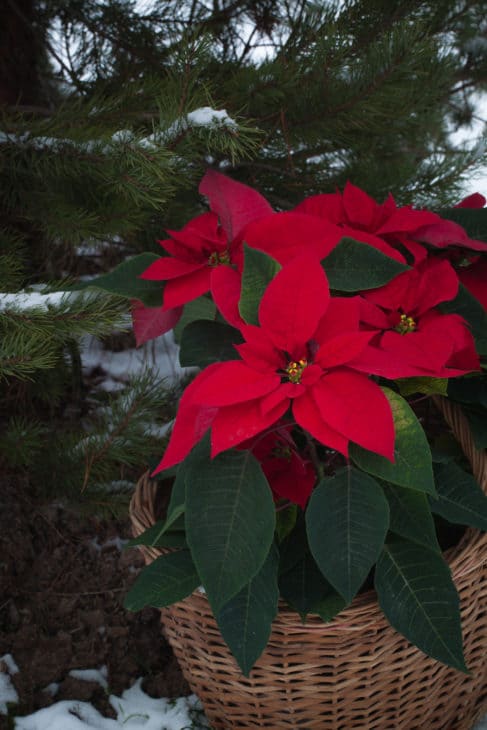
The poinsettia plant is used in floral displays for Christmas as it contains both green and red foliage. The plant has a reputation for being highly toxic, but that may not be the case. In many cases, physical contact or consuming it may not have any negative effects. That said, you should not risk it, as symptoms including diarrhea, vomiting, and nausea may occur.
8. Rosary Pea (Abrus Precatorius)
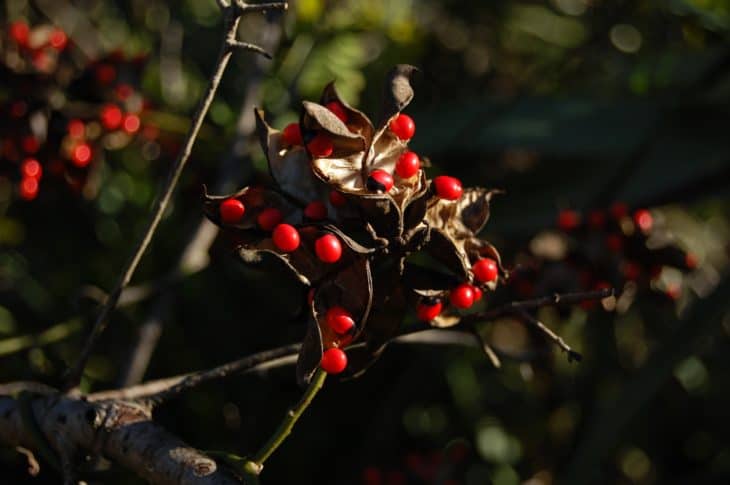
Also known as Crab’s Eyes, Rosary Pea is a poisonous plant with highly poisonous seeds. If you ingest the seeds of this plant, you will experience severe abdominal pain, nausea, vomiting, fever, shock, diarrhea, tremors, high heart rate, and burning in the throat. It can also be fatal. It is native to tropical regions across the world. Rosary Pea has tiny, white to pink or lavender-pink blooms that grow in clusters in the leaf axils. It has pinnate, compound, deciduous, alternate, green, oval-shaped leaves and black-red, showy fruits.
9. Apple of Sodom/Thorny Popolo (Popolo Kikania)
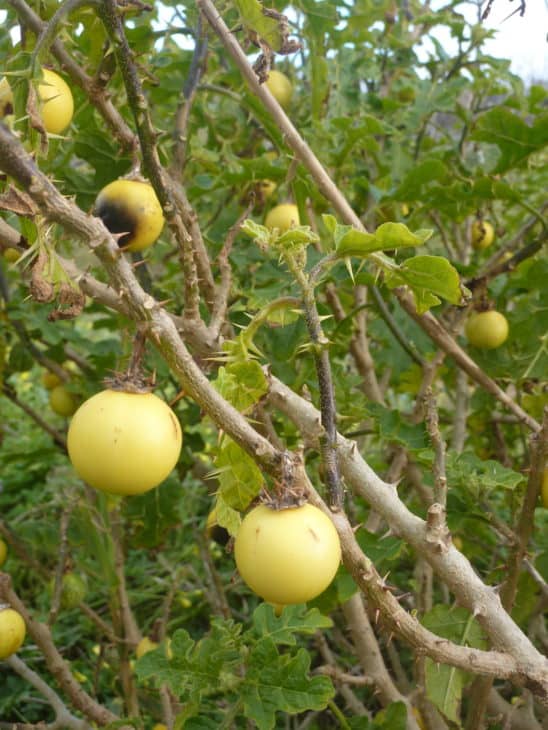
This invasive plant is a common sight in dry highland pastures and along roadsides. The shrub has thorny leaves and five-petaled blue blooms that are low and rambling. The round, firm, and light yellow fruits resemble tomatoes in shape and texture. Toxic to grazing animals, the sodom apple’s deadly fruit further identifies it as a threat to East African wildlife. Herbivores that eat woodier plant material, such as sheep, cows, and other grazing animals, aren’t poisoned by the plant. In contrast, sheep, cattle, and other grazing animals are susceptible to being poisoned.
10. Coral Plant (jatropha Multifida)
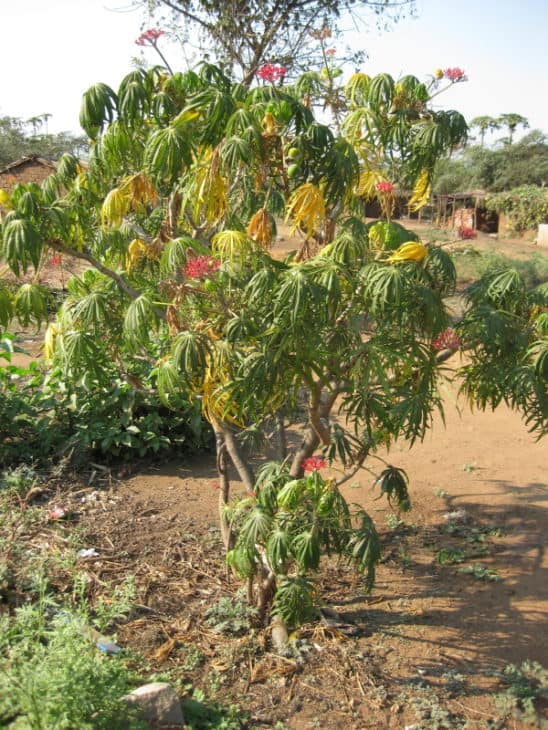
A species of Jatropha native to Mexico and the Caribbean is Jatropha Multifida or coral plant. It’s a garden plant that’s made its way to Florida and many other countries in the Americas, Asia, Africa, and the Indian subcontinent. There have been several Calotropis-related gastrointestinal, cutaneous, and ocular cases reported. Toxic cardiac effects can be caused by Cardenolide glycosides found in the plant.
11. Jimsonweed/Devil’s Weed (Datura Stramonium)
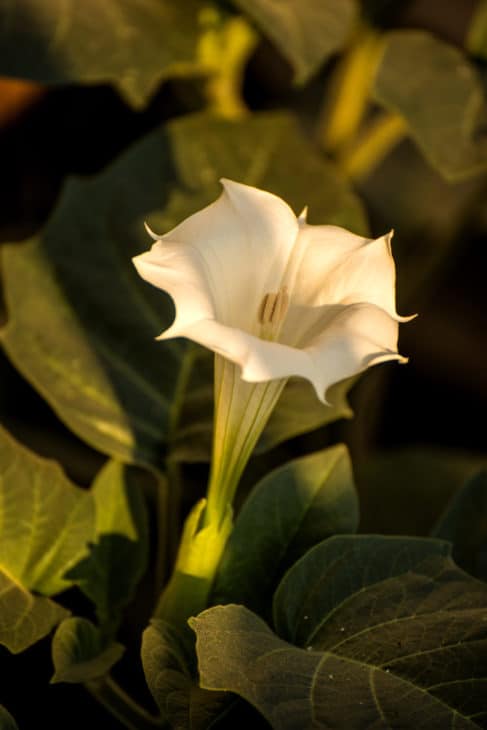
This plant can reach a height of 4 feet, and the leaves can be as long as 3 inches. Some people use the seeds of the white, trumpet-shaped bloom as a form of ecstasy; others eat the nectar. When you take it, you feel queasy, hungry, and feverish, and your pulse weakens. At times, you may even lose track of time or see stuff that is not actually there.
12. Physic Nut (Jatropha Curcas)
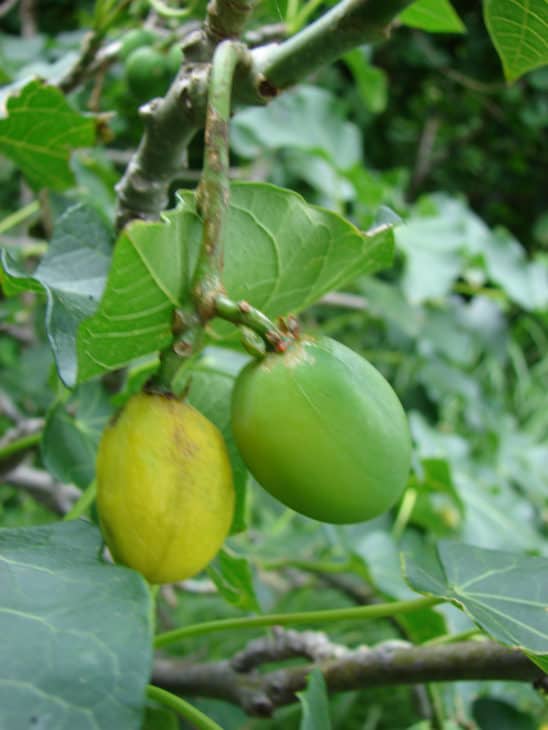
The flowering plant Jatropha curcas is a member of the Euphorbiaceae (spurge) family, endemic to Central and South America. The seeds of the psychic nut, which contain the most ricin of any component of the plant, are the most lethal part of the plant. Seeds can cause vomiting, nausea, diarrhea, cramping in the stomach, and a burning feeling in the throat if consumed.
13. Pineapple (Ananas Comosus)
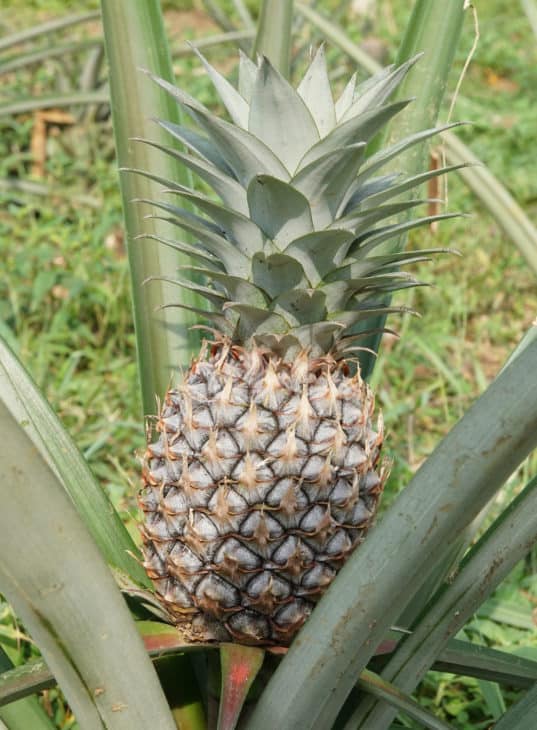
The pineapple is the most commercially important plant in the Bromeliaceae family, thanks to its edible fruit. In South America, the pineapple has been grown for many centuries. The pineapple plant’s unripe meat, leaves, and thorns can be hazardous, but the plant’s skin is not. The entire fruit is not dangerous. This is due to the reason that the enzyme bromelain present in the plant, which is used to tenderize the meat, is regarded to be extremely low in toxicity.
14. Laceleaf (Anthurium)
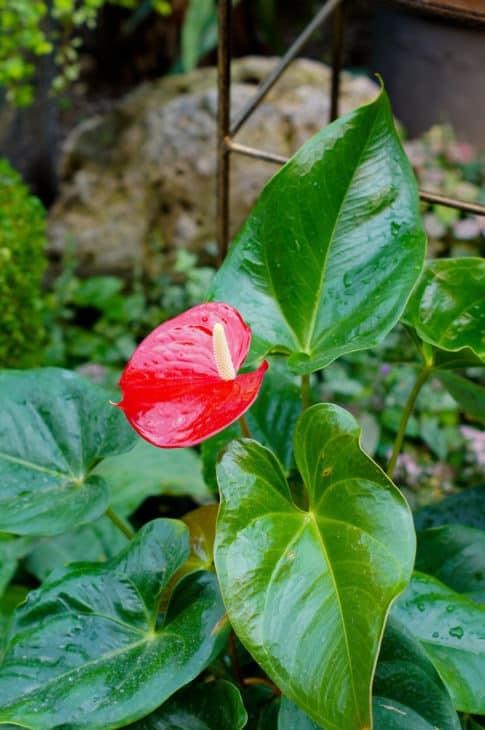
Anthurium is an enormous genus in the arum family, Araceae, with over 1,000 species of flowering plants. Flamingo flower, tailflower, and laceleaf are some of the most common names for anthuriums. Flamingo flowers and pigtail plants are other names for these poisonous plants. You will feel a scorching feeling in your mouth if you consume them. Blisters and swelling in your mouth are possible adverse effects. You may have trouble swallowing, and your voice may sound hoarse once you ingest them.
15. Pua Kala (Argemone Glauca)
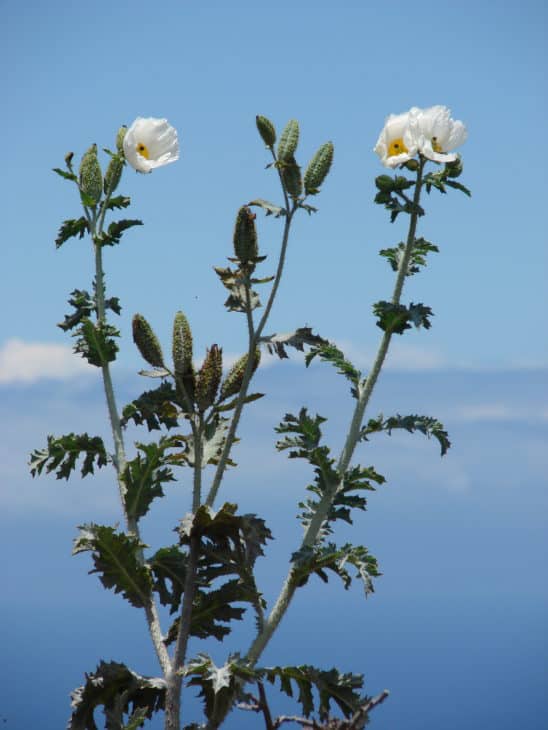
The iridescent white blossoms offer a striking sight in a dry, coastal environment. This plant is one of the few indigenous species that thrives in pastures. Because of its thorns, cattle and other animals avoid it. It is possible to utilize Pua Kala as a lovely, natural border hedge to discourage undesired grazers from accessing temperate regions. Native Hawaiians have discovered medical applications for the plant despite its danger to humans and animals.
16. Florida Hopbush (Dodonaea Viscosa)
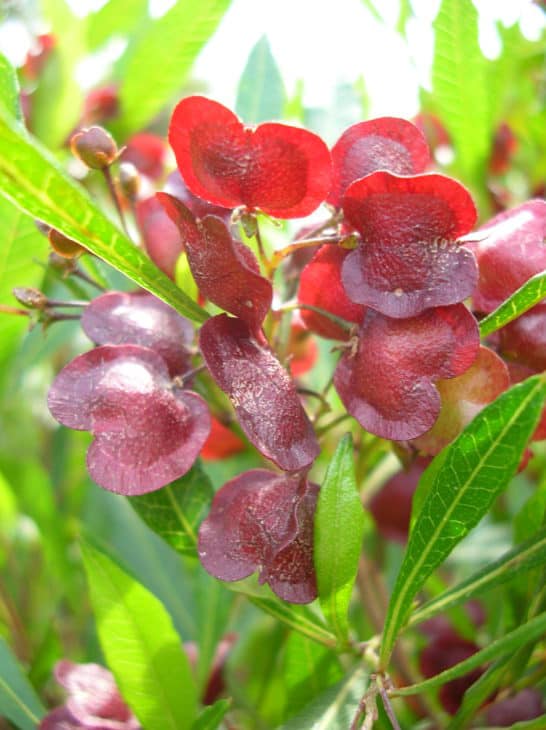
Tropical, subtropical, and warm temperate climates of Africa, South Asia, North America, and Australasia all host Dodonaea Viscosa as a member of the Dodonaea genus. Sapindaceae is included in the soapberry family, and Dodonaea belongs to it. The lustrous dark green leaves are alternating, narrowly oblanceolate, and alternately arranged on the stems of this plant. Saponin, a bitter, soapy, foamy chemical present in the plant, is why the plants are toxic.
17. Madam Fate (Hippobroma Longiflora)
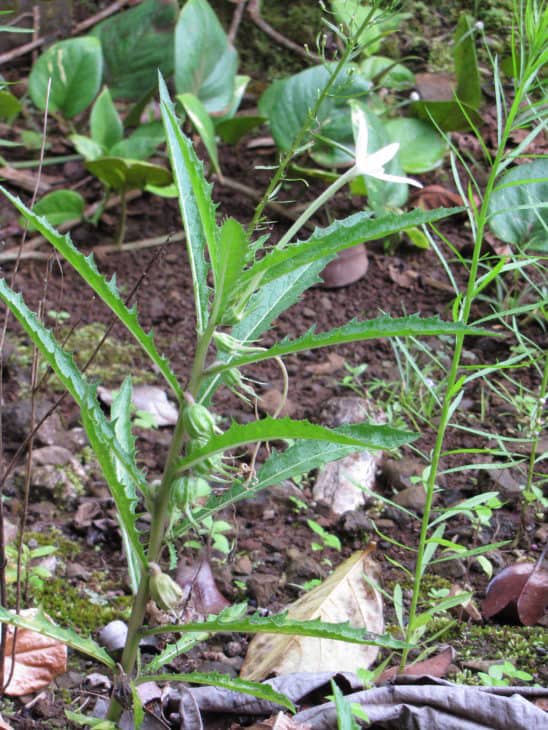
Madam Fate is a star-shaped, tubular, 5-lobed bloom that can grow up to 5 1/2 inches or 14 cm long. Even though the blossoms look jasmine-like, they do not smell like it. Toxic and unpleasant, the sap is a milky white color. Be careful not to let sap get into your eyes, as this might result in blindness. When working with this plant, always use gardening gloves.
18. Woodrose/Elephant Creeper (Merremia Tuberosa)
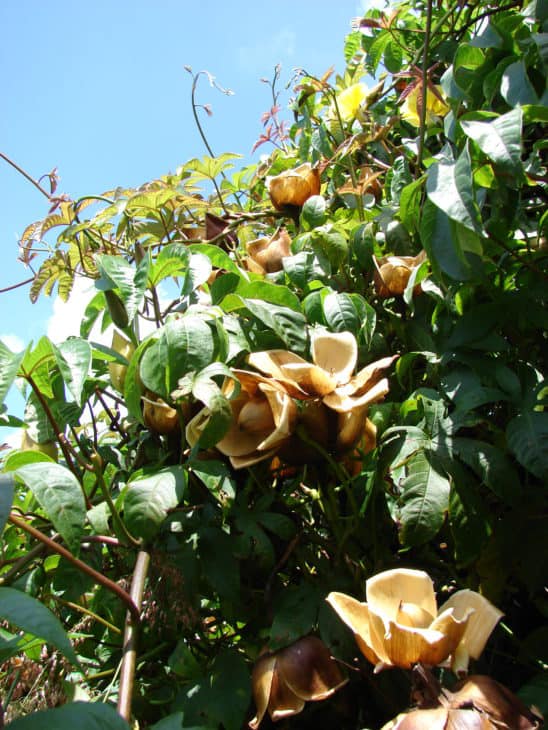
Even though it might be intrusive, its cosmetic and therapeutic benefits frequently outweigh its drawbacks. This plant has many common names, Hawaiian Baby Woodrose, Elephant Creeper, Adhoguda or Vidhara, and Woolly Morning Glory. You should handle this plant with caution due to the solid entheogenic qualities of its seeds. Due to the high concentration of lysergic acid in the seeds, they have long been prized for their hallucinogenic properties. This plant is poisonous and its use could have various adverse effects.
19. Swiss Cheese Plant (Monstera Deliciosa)
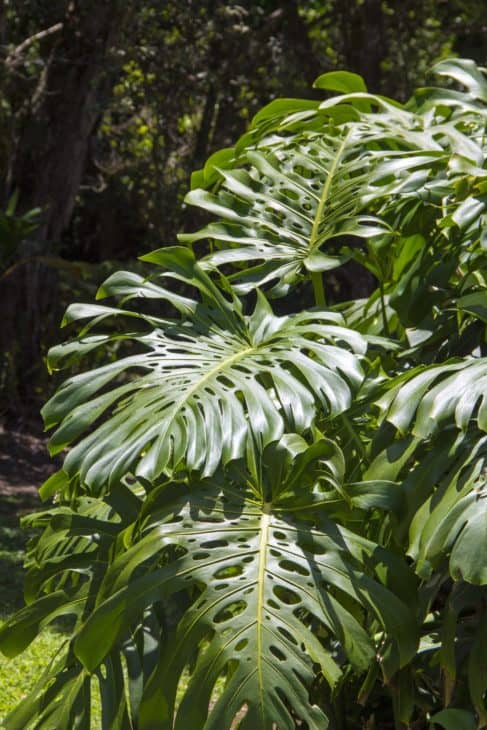
This plant has a woody vine and can reach about 70 feet tall. It is also a house flower and likes moderate temperature about 60 – 85 degrees. This plant contains insoluble calcium oxalate, which makes it poisonous for pets. If a cat eats, it can cause a lot of discomfort in its mouth. The plant has a terrible taste, so your pet will most likely stop after a tiny bite.
20. Water Lettuce (Pistia Stratiotes)
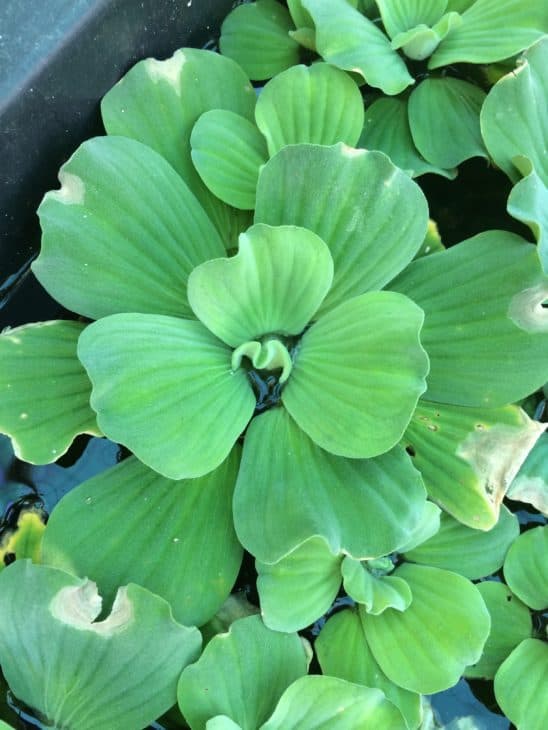
There are two species of Pistis, both of which are aquatic plants of the Araceae genus. This plant is the only genus in the Pistieae tribe, demonstrating the family’s systematic exclusion. Often referred to as water cabbage, Nile cabbage, water lettuce, shellflower, Pistia Stratiote is a single species of plant. Pale-green leaves sprout from the plant’s core, giving water lettuce its common name (Pistia Stratiotes). The leaves have deep ridges and their length is nearly 6 inches.
21. Pink Wood Sorrel (Oxalis Articulata)
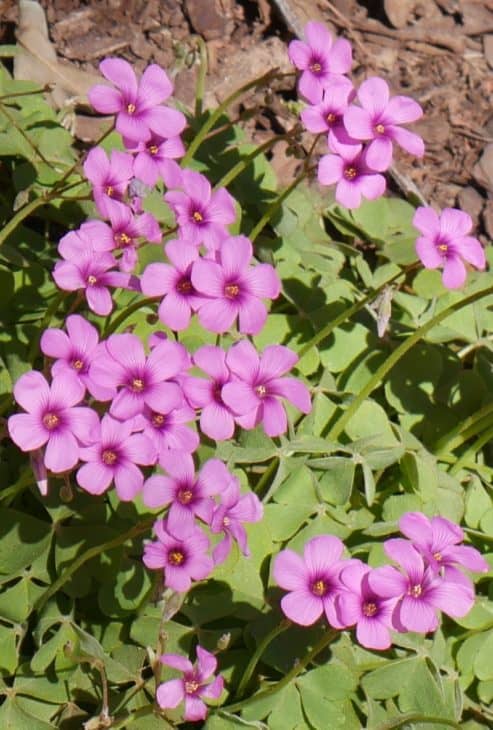
Sorrel or pink sorrel (Oxalis Articulata) is a perennial Oxalis species endemic to temperate South America that is also known as “window box wood sorrel” (Chari Amilo), “sourgrass” (Netho saag), and “pink wood sorrel.” The oxalates found in the leaves of this plant are toxic. However, the effects are only local and not systemic. This plant can thrive in both full sun and light shade.
22. Plumbago/Cape Leadwort (Plumbago Auriculata)
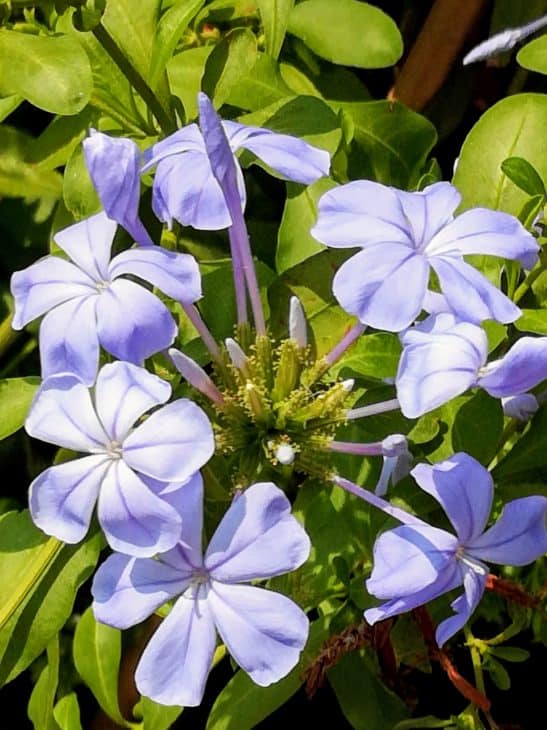
Blue Plumbago, Cape Leadwort, and Cape Plumbago are all names for the same flowering plant in the Plumbaginaceae family, indigenous to South Africa. The leaf form of this plant is referred to as “articulate,” which means “ears.” Toxins in Plumbago Auriculata cause eye and skin irritation. They are poisonous if consumed and cause nausea and vomiting when applied topically. Toxicity is found in all of the parts and byproducts of this plant.
23. Emperor’s Candlesticks (Senna Alata)
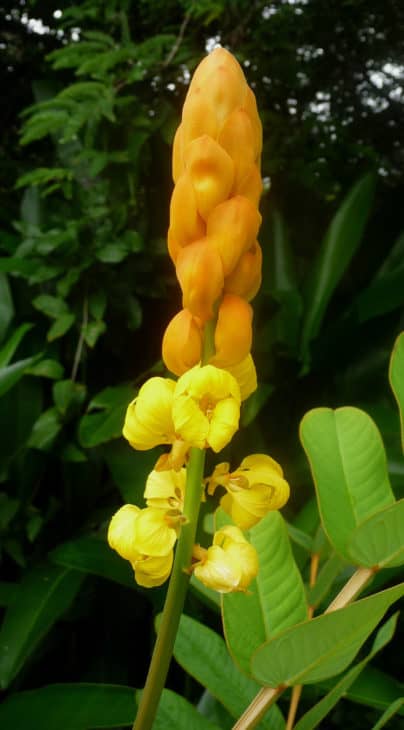
Senna Alata is an essential medicinal tree and a beautiful blooming plant in the Caesalpinioideae subfamily. Some of the other names of this plant include Candelabra bush, ringworm shrub, emperor candlesticks, and Christmas candles. This plant’s seeds and leaves may pose a health risk when swallowed in significant numbers. This plant is native to South America, and it is now often planted as a decorative plant.
24. American Black Nightshade (Solanum Americanum)
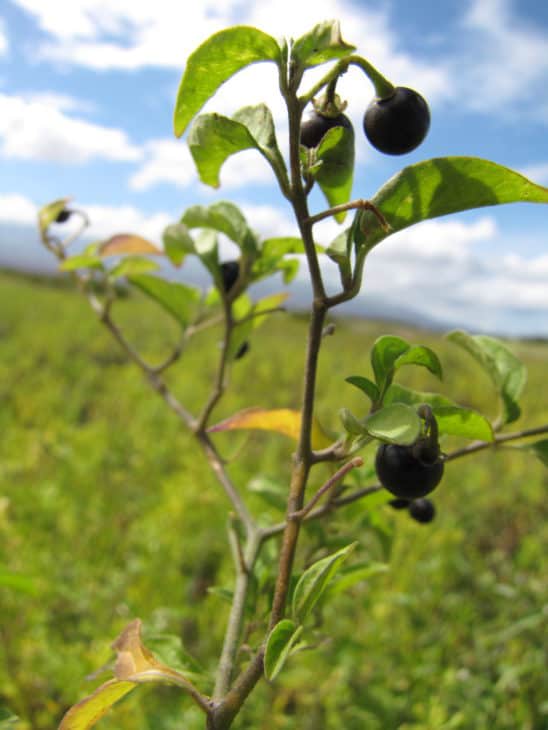
This plant includes a toxin called solanine in black nightshade, which is toxic to humans. The plant’s most toxic components, the green fruits, contain the largest concentrations of solanine. All parts of the nightshade plant are harmful to eat. The Missouri Botanical Garden warns that even little contact with a plant can be hazardous if the skin is cut or otherwise damaged. Skin that is both intact and in good condition may serve as a protective layer when coming into contact with this plant. However, it is best to wear gloves when handling the plant.
25. Star of Bethlehem (Ornithogalum Umbellatum)\
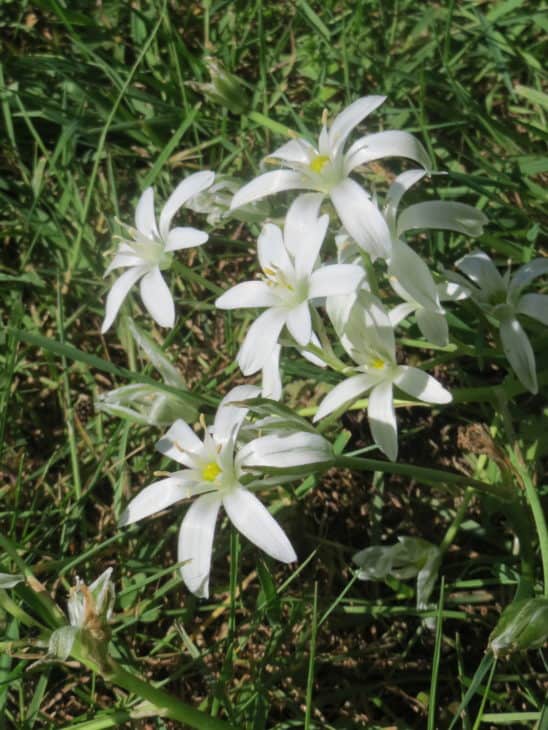
Star of Bethlehem is a widespread plan spread throughout Europe, northwest Africa, and southwest Asai. This bulbous perennial forms carpets of low-growing, strap-shaped basal leaves that are topped with star-shaped or cup-shaped, white, orange, or yellow blooms. All parts of this plant can cause severe discomfort when ingested, and its sap might cause skin irritation.

